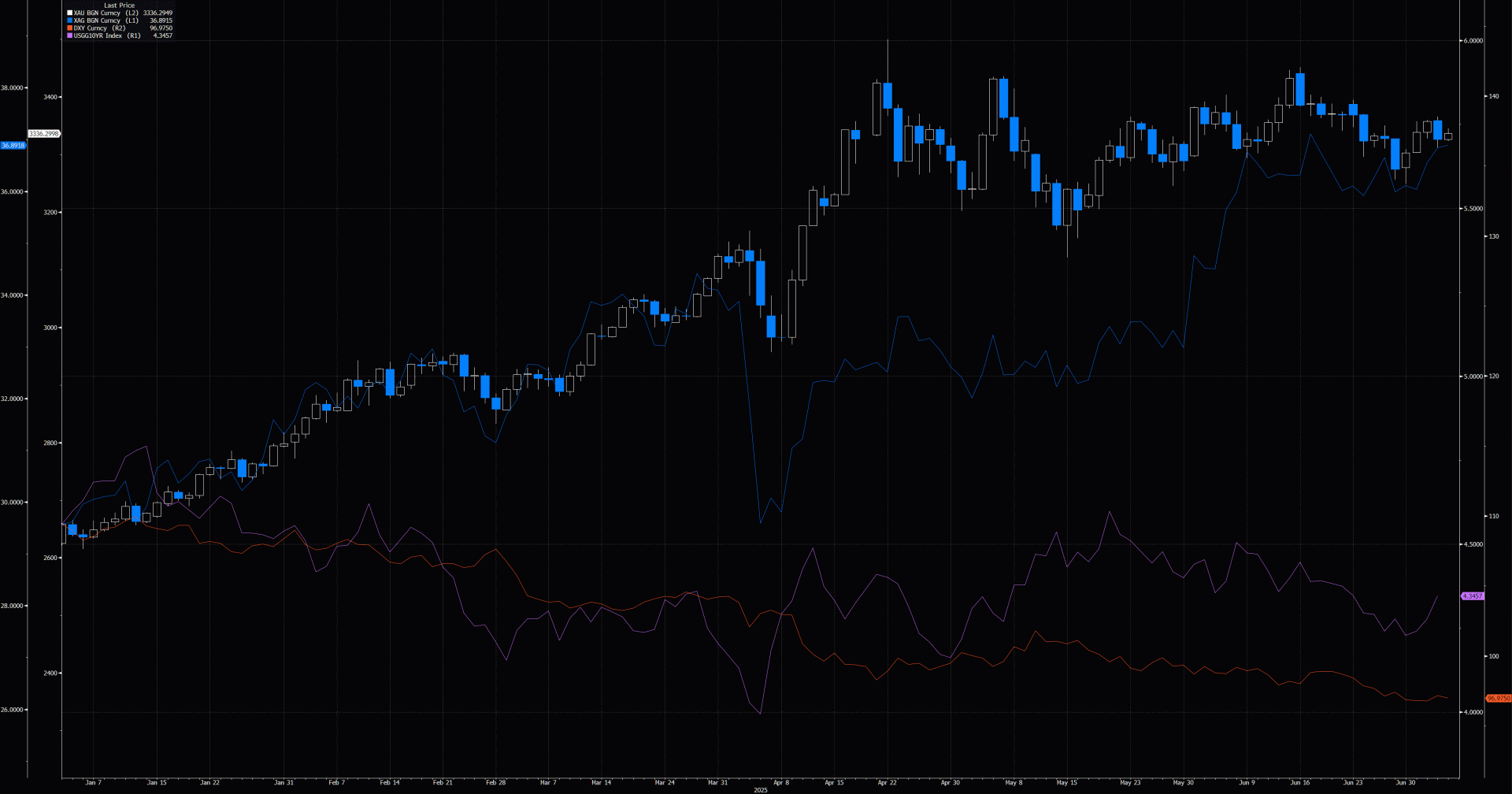Investing in gold and/or silver has recently proven to be highly profitable. Gold has continued its long-term upward trend, rising by around 20% since the start of the year, bringing its gains since early 2023 to an impressive 60%. That’s an exceptional return for a non-yielding asset. Unlike in some previous periods, this time silver has followed suit — also climbing by about 20% year-to-date, although with greater volatility along the way. Let’s take a look at the key drivers behind this rapid appreciation.
Such strong price action in gold is typically linked to heightened market uncertainty and a shift in investor focus from chasing high returns to preserving capital. These shifts often follow systemic shocks, geopolitical tensions, or major policy shifts — all of which have been abundant lately. Just in the past few months, we’ve seen Trump’s “Liberation Day,” the beginning of a new trade war between major global powers, conflicts in the Middle East, flare-ups between India and Pakistan, and renewed escalations in the Russia–Ukraine war. These types of events tend to trigger risk-off behavior and rotation into defensive assets.
What makes this time different, however, is how investors are perceiving the U.S. dollar, Treasuries, and American assets in general. Trump’s aggressive policy shifts have shaken confidence in what were once seen as the world’s ultimate safe-haven investments. As a result, every new geopolitical flare-up or signal of instability has further fueled gold’s rally.
While safe-haven buying has certainly played a major role in this surge, it builds on a powerful underlying trend — consistent, large-scale gold purchases by central banks. Over the past three years, central banks have accumulated more than 1,000 tons of gold annually, with 2025 shaping up to be no different. China and Poland have led this accumulation, seemingly buying regardless of price or market conditions. This behavior has boosted confidence among investors and speculators alike.
With the price of gold surpassing $3,500 per ounce in April, it crossed into new territory, breaking its inflation-adjusted all-time high from the 1980s. This reinforces gold’s status as a store of value, but also raises questions about its valuation. Historically, previous peak in 1980 was followed by long bear markets. In that case, it led to a two-decade decline, with prices ultimately falling by around 70%.
This is not to suggest a bearish view on gold in the current environment — especially not while central banks are still providing a strong and consistent bid. However, caution at these elevated levels is not unwarranted, particularly for shorter-term traders.
Silver, on the other hand, has followed a very similar trajectory this year. After breaking out of a multi-year trading range in mid-2024, investor sentiment finally turned positive, and silver fully participated in the rally alongside gold. What’s particularly interesting is how closely silver has tracked gold despite major differences in their use cases, buyer profiles, and market dynamics.
Unlike gold — where central banks are the largest buyers — silver is not held in any significant quantity by monetary authorities. Russia has announced intentions to build silver reserves, but little detail has emerged so far. In practice, silver is primarily an industrial metal, with the bulk of demand coming from manufacturing.
One major driver of silver’s price this year is growing demand from the green energy transition — especially solar panel production — while supply continues to lag. The silver market has experienced a supply deficit for five consecutive years, with production consistently falling short of demand.
When you combine that industrial demand with silver’s traditional role as a precious metal and perceived inflation hedge, it’s not hard to see where the fuel for this rally is coming from.
In conclusion, both gold and silver — and their investors — have benefited enormously from the current environment: geopolitical tensions, economic uncertainty, diminished confidence in traditional safe havens, and strong underlying demand. Looking ahead, it’s hard to make firm predictions. Much will depend on whether U.S. policy stabilizes, whether investors begin to rotate into other asset classes, or whether gold and silver continue reaping the rewards of the current regime.
Gold and silver outperformance in 2025

Source: Bloomberg, InterCapital
